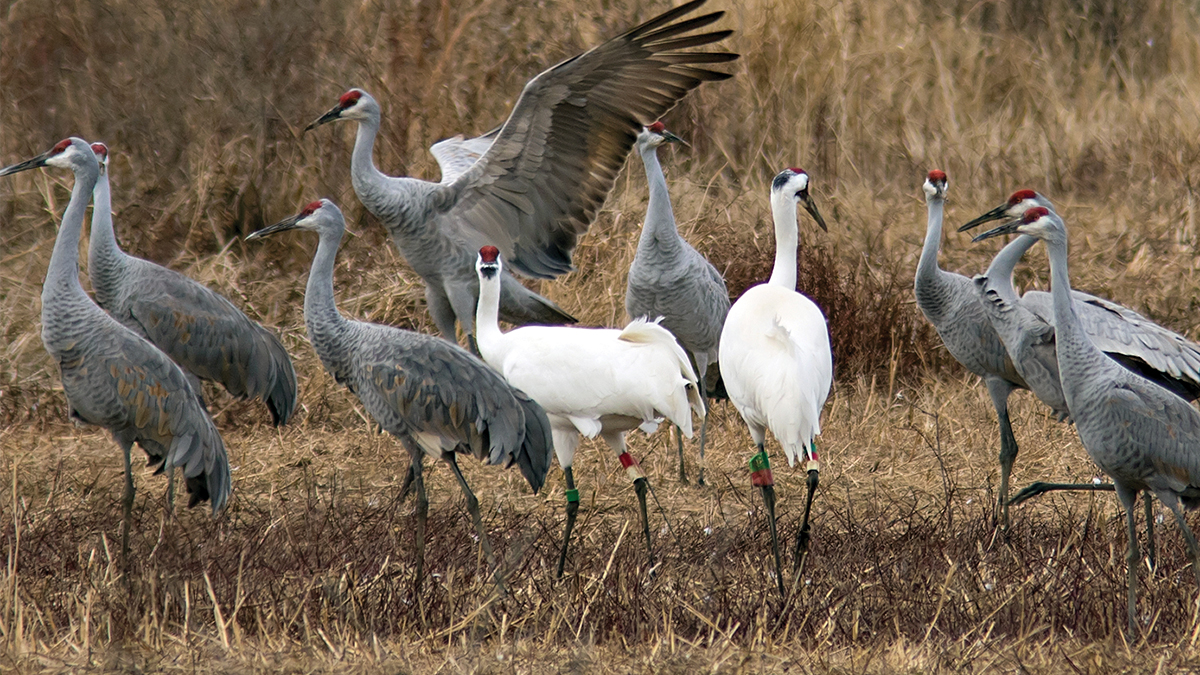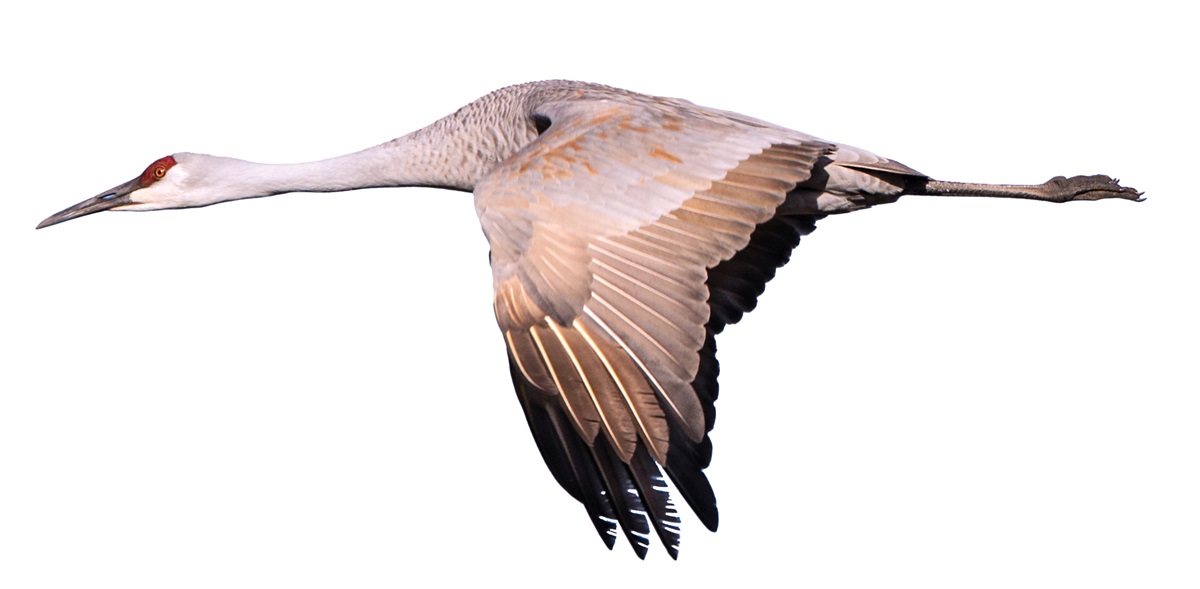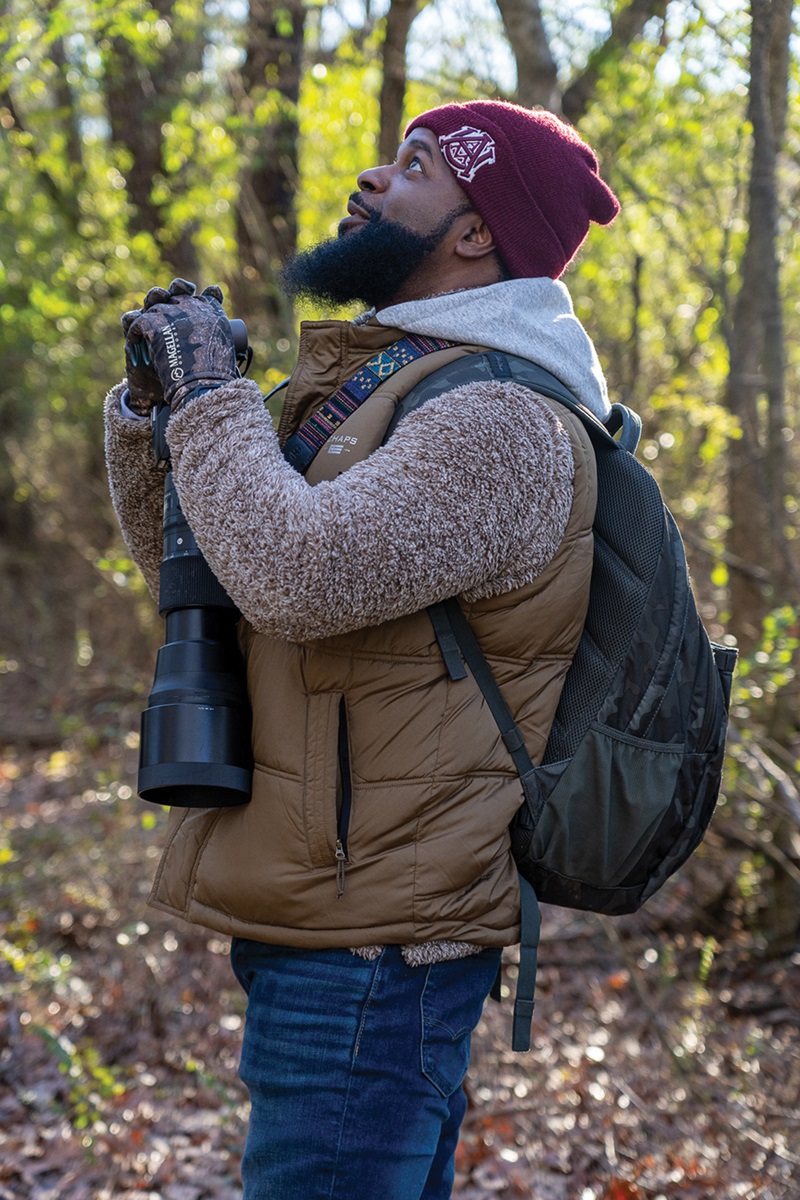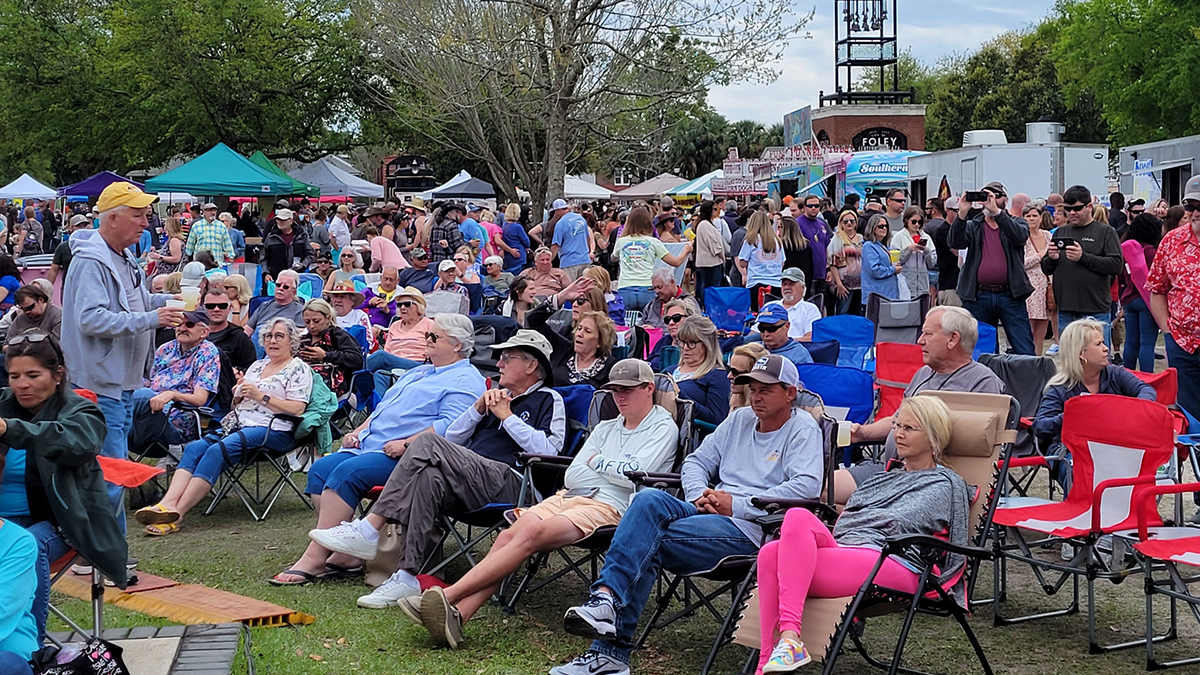Cranes are celebrity ambassadors for wildlife refuge in Decatur, Alabama

Nearly 30,000 sandhill cranes and 20-25 whooping cranes fly to Wheeler National Wildlife Refuge each winter to take advantage of the 35,000-acre habitat for migratory birds. (George Lee / Alabama Living)
Back in the early 1990s, a small group of snowbirds on their way south for the winter made a rest stop at Decatur’s Wheeler National Wildlife Refuge (WNWR) and ended up staying for the entire season. Word of this newfound overwintering wonderland apparently spread, because today it’s a favorite destination for thousands of seasonal migrants.
These “snowbirds” are of the avian, rather than human, variety — migratory sandhill and whooping cranes that spend summers in the Great Lakes region and northern Canada and fly south to warmer climes in the winter. Traditionally, they overwintered in southern Georgia and northern Florida, but that began to shift northward when, in 1992, three sandhill cranes made WNWR their winter home. Over the next several years, more sandhills joined them, and the seasonal population grew to about 500 cranes in 2005, including several endangered whooping cranes that began arriving the year before.
Today, between 10,000 and 30,000 sandhill cranes and 20-25 whooping cranes sojourn at the WNWR each winter to take advantage of all the 35,000-acre refuge has to offer. The refuge, along the Tennessee River above Wheeler Dam, was established in 1938 to provide wintering and breeding habitat for ducks, geese and other migratory birds and wildlife. Much of the area is drained in the summer to control mosquitoes and reflooded in the winter, which WNWR park ranger David Young says is ideal winter habitat for the cranes.
The cranes begin arriving in mid-November and stay until early to mid-February, forming huge gatherings of gray-feathered sandhills punctuated by bright white whooping cranes. Both species are long-legged and statuesque (4 to 5 feet in height) with impressive 5- to 7-foot wingspans.
They are also boisterous birds, communicating with one another through an array of burbles, purrs, rattles, snores, hisses, honks and their species-specific calls — sandhills make bugling sounds while whooping cranes, true to their name, “whoop” — that can be heard up to 2½ miles away. And they are famously elegant and exuberant dancers, performing a series of bows, bobs, wing-flaps, stick tosses and spectacular leaps (6 to 8 feet high) during courtship rituals but also year-round.
These large flocks (sometimes called sedges) are a sight to see and hear, and the WNWR is an ideal place to do both. The refuge’s two-story observation building, a temperature-controlled facility near the visitor’s center — and just 3 miles off Interstate 65 — offers exceptional views of the cranes and the many ducks, geese and other migratory birds that spend winters there.

The annual migration of thousands of cranes to spend the winter at Wheeler National Wildlife Refuge in Decatur began with three cranes that discovered the spot in 1992. (contributed)
Conservation and raising awareness
The refuge is also a go-to destination for thousands of human visitors who flock there to view the cranes, which inspired the Wheeler Wildlife Refuge Association (WWRA), a “friends of” group of volunteers, to create the Festival of the Cranes in 2012.
The WWRA works to conserve and raise awareness of the many natural and cultural wonders found at WNWR, which, according to the organization’s president Mary Ratliff, are remarkable.
“To me, it’s one of the most important natural resources in the area,” she says. “It’s like having a 35,000-acre personal park right in the middle of two cities (Huntsville and Decatur).”
“It’s kind of a hidden treasure up here,” Young says. “We’ve had folks who have lived up here for decades who aren’t aware of it.”
“We (the WWRA) wanted to bring awareness to the fact that this is something really special and we should take care of it,” Ratliff says.

Birder and conservationist Christopher Joe, founder of Connecting with Birds and Nature Tours in Greensboro, has lent his ecotourism expertise to the Festival of the Cranes at Wheeler National Wildlife Refuge. (Trey Moody)
Experts on hand
Back at the refuge, hours at the visitor center and observation building are expanded throughout crane season (9 a.m. to 5 p.m.). Throughout the season, the refuge offers free guided Whooping Crane Walks most Saturdays starting at 11 a.m. and Waterfowl Wednesdays walks at 8 a.m.
Young also encourages visitors to come see the cranes on weekdays, which are usually less crowded. Any time of year is a great time to visit the refuge, which offers year-round bird watching, kayaking, cycling and hiking opportunities, as well as hunting and fishing seasons.
“There’s something to see here all year long,” Young says, noting that the plant and animal life changes with the seasons. “It’s different all the time, especially as the water level changes.”
Ratliff said the cranes are excellent celebrity ambassadors for the refuge and nature, drawing thousands of visitors to the refuge — about 16,000 last year — and, combined with the festival, will help those visitors discover the region’s many other natural and cultural resources.
“We want to let them know that we have other opportunities here,” she says. Many visitors are driven by the state’s remarkable biodiversity. And that, Ratliff hopes, will encourage people to get out in nature and care about these natural places.
More about WNWR is available at fws.gov/refuge/wheeler. Details of other activities are available at friendsofwheelernwr.org.
This story originally appeared in Alabama Living magazine.





